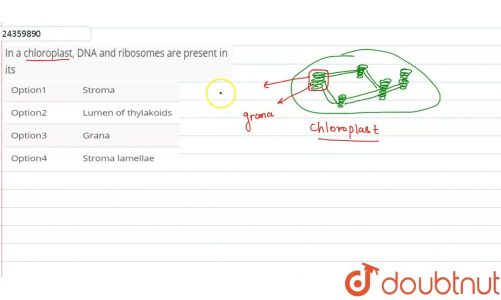Cells as the basic unit of living Organisms | A Level Notes Biology 9700
Objective
The objective of this unit is to have a deep knowledge of the cell and its organelles.
Electron Micrographs Of Cells
The development of an electron microscope leads to a better understanding of the cell and its organelle. Electron microscope gives a better resolution than a light microscope. It uses a beam of electrons to create the image. As electrons have smaller wavelength the resolution is better.
Plant Cells In Electron Microscope
The electron micrograph of a plant cell shows the detailed structural organization of its organelles.
A typical plant cell has a large membrane-bound vacuole in the center of it. It stores the excess amount of water and solutes.
Due to the vacuole, the nucleus is pushed to the periphery of the cell. The nucleus is membrane-bound and has a nucleolus in the center. The rest of the cytoplasm contains an extensive network of membranes called the endoplasmic reticulum. It serves as a transport system of the cell. Two types of Endoplasmic reticulum can be seen. One has a granular surface due to the presence of ribosomes on its surface. The other one is smooth as ribosomes are absent.
Other organelles mitochondria and chloroplast are also present in the cytoplasm. These organelles are the center of ATP generation and photosynthesis.
Animal Cells In Electron Microscope
Animal cells have a similar structure although few things are different from plant cells. This is due to the difference in their mode of habitat. Animal cells lack chloroplast and cell walls. The outer most boundary is the cell membrane.
The cytoplasm has an internal membrane system as well. This comprises of endoplasmic reticulum, mitochondria, Golgi apparatus. Ribosomes are present on the endoplasmic reticulum. The nucleus is present in the center as the vacuole is absent. Although glycogen in the form of droplets is present in the cytoplasm.
Cell Organelles
Organelles are the structures that are present inside the cell. They perform different functions inside the cell. There is very little difference between animal and plant cells otherwise they have structural organization.
1) Endoplasmic Reticulum
Structure
The endoplasmic reticulum is the membrane-bound organelles. It comprises of tubules of the membrane which extends from nuclear membrane to cell membrane.
Types Of Endoplasmic Reticulum
There are two types of the endoplasmic reticulum. This classification is made based on the presence of ribosomes.
i) Smooth Endoplasmic Reticulum
Smooth endoplasmic reticulum has a smooth appearance due to the absence of ribosomes.
Its functions are lipid synthesis, detoxification, and storage of calcium ions.
ii) Rough Endoplasmic Reticulum
Rough endoplasmic reticulum appears granular due to the presence of ribosomes.
Their function is mostly associated with protein synthesis.
Function:
The main function of the endoplasmic reticulum is the transport of substances from the nucleus to the cytoplasm.
It also helps in maintaining the shape of the cell.
2) Cell Membrane
Structure
The cell membrane is the outermost boundary of the cell. It is made of phospholipid molecules. A phospholipid molecule has two ends hydrophobic and hydrophilic. The membrane has a fluid nature.
The cell membrane is semi-permeable. That is it allows a certain substance to pass through. This helps in maintaining the internal environment of the cell.
There are protein molecules that are attached to the membrane. These proteins help in the transport of a substance.
All the membrane inside the cell has the same structure.
Function:
The cell membrane serves as the outer boundary of the cell. Thus, it separates the intracellular environment from extracellular.
3) Nucleus
Structure
The nucleus is a double membrane-bound organelle. It is the control center of the cell.
1) Nuclear Membrane
It is a double membrane that forms the outer boundary. It separates the nuclear contents from the cytoplasm. The nuclear membrane has pores that allow exit and entry of substances.
2) Nucleolus
The nucleolus is present in the center of the nucleus. It consists of RNA and proteins.
3) Nucleoplasm
Nucleoplasm is a gelatinous substance present inside the nucleus. It consists of salts, enzymes and other substances dissolved within it. Nucleoplasm act as a medium for the transport of substances and helps the nucleus in maintaining its shape.
Function
The nucleus is the control unit of the cell. It contains all the hereditary information of the cell.
4) Golgi apparatus
Structure
Golgi apparatus consists of a stack of membranes.
Function
Its main function is the packaging and transport of substances outside the cell.
#Biology9700 #Cells #Cellsasthebasicunit #livingOrganisms #basicunitoflivingOrganisms #CellsasthebasicunitoflivingOrganisms
source


